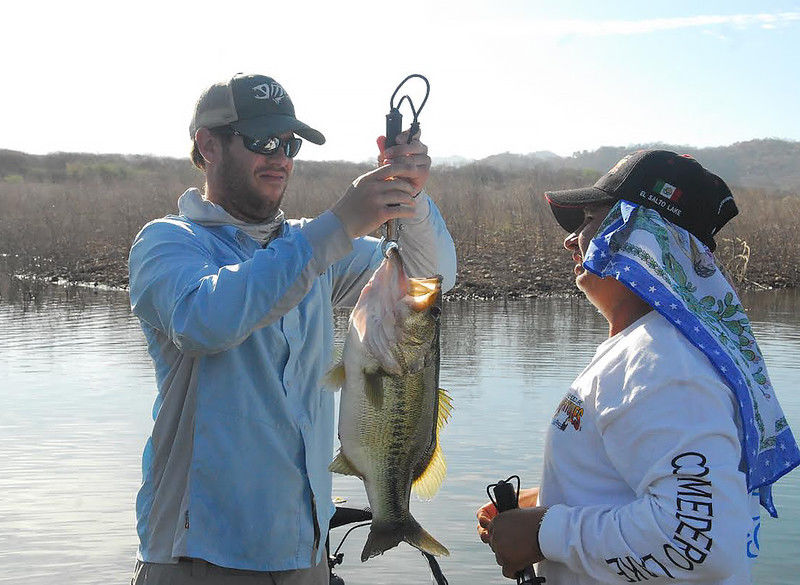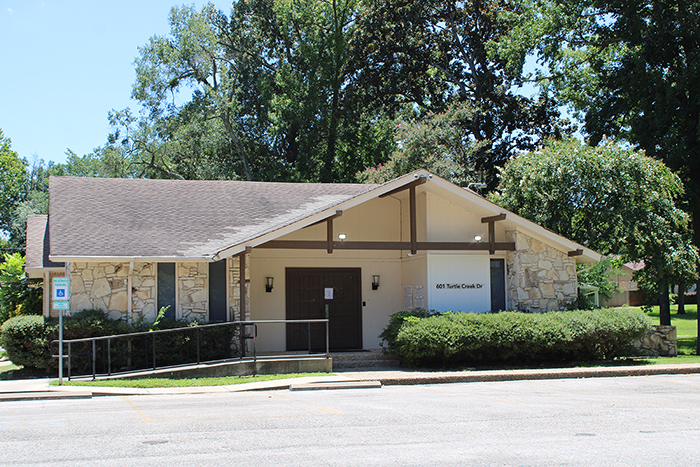Mexico’s Lake Comedero is where the big bass grow
Published 6:59 am Monday, April 3, 2017
HIGUERAS DE JACOPA, Mexico – To fishermen who have seen it ,it is called a wolf pack. To those experiencing it Lake Comedero style, it is 15 seconds of total chaos.
On any lake, a fisherman can hook a bass and several others might chase it to the boat. It is not that uncommon of an occurrence. On Comedero, the caught bass may weigh 5, 6, 7 pounds or more and the pack that is after it might be even larger.
Trending
Wimberly fisherman and lure manufacturer Terry Oldham was working a jig across what he had appropriately named Big Fish Point. He was working water anywhere from 15 to about 21 feet deep, concentrating primarily on points with either submerged brush or rocks.
It was the last week of the season for Ron Speed Jr.’s Adventures camp on the 34,000-acre lake and with almost all of the largemouth bass having spawned they were transitioning from the shallowest depths back toward the river.
For a former B.A.S.S. fisherman and guide on Falcon Lake like Oldam transitioning fish would not normally be a problem to locate. Comedero, however, had only been reopened to sportfishing for a little more than a year and while he was no newcomer to it he was still learning its nuisances.
Jerking the jig upwards with a hard pop of the rod, Oldham’s only words were, “That’s a big fish.” Using heavy braided line to manhandle one over the rocks and through the brush, he quickly reeled the 7-pound, 15-ounce bass toward the surface.
As the bass was coming up, Oldham noticed an entourage of big bass with it. As he struggled to reel in his fish, he stammered out instructions the best he could for me to drop some type of bait in the water next to them. I had a rod with one of his one-ounce spinners in my hand and immediately hit the release button, dropping the bait into the fray.
It dropped maybe a foot before I clicked the handle and the biggest fish struck at it, but there was too much slack in the line and I missed the hook set. I didn’t even have time to let it sink anymore when another fish slammed the bait. Within seconds we had 13 pounds of bass in the net. Oldham said, based on his experience, had I hooked the first one we would have had 16 pounds.
Trending
Once more on that point and again on a ledge coming up off the river, we had two more doubles.
There are places that are holy to different groups of people. For fishermen, one of those is Mexico’s Lake Comedero.
One of three lakes on the country’s west coast that are currently drawing fishermen, Comedero is full of big bass habitat. It is also full of big bass weighing 7 pounds and up based on records from Speed’s season that stars in December and ends in March.
“I have fished quite a few pretty good ones. I rank this for trophy fish way above all the rest of them,” Oldham said. “You still have to fish to catch them, but your chances of catching a fish of a lifetime are off the charts. The fish here are as big as you will find anywhere, bigger than most. It is an unbelievable lake and you can catch them on a lot of different lures, big spinner baits, jig, topwaters.”
Three white boards scattered around the lodge’s lunchroom are full of the names of fishermen and the baits they were using when they caught an 8- or 9-pound bass this season. Another is more than half full of those with double-digit bass. All caught in less than four months.
Comedero was discovered in 1987 by Speed’s father, Ron Speed Sr., one of the pioneers of Mexico bass fishing.
“My dad told me if there was ever a lake in the world where you could grow a world record bass it would be Comedero. One because of the remoteness of it. There is no pressure. Two, the depth. Commercial fishermen will never fish it out. Three you have the No. 1 bait fish forage, tilapia that is high in protein and four you have the warmth. It never gets cold here so the fish feed year around,” Speed explained.
What was missing from the lake’s potential in the beginning was the Florida genetics that produce the largest largemouth bass. The Speeds addressed that issue over a three-year period starting in 1989 by having Florida genetics brought in.
By 1997, the lake record was 18 pounds. In 2002, it jumped to 19 pounds. On his first trip in early January, Oldham said his boat alone probably weighed 100 bass over 8 pounds and up to 10.
While a double-digit bass is a real possibility, two were caught the week before we arrived, the 7s, 8s and 9s are the lake’s bread and butter.
Fishermen can catch bass on a variety of lures with the exception of crankbaits that are prey to the dense underwater vegetation, but the primary options are one-ounce or larger jigs and similar-sized spinners depending on whether the fish are over or under the brush.
“When they are right on top of it like they have been the last week or two you can get them on spinner baits, but when they are down below it you have to go more vertical with jigs, lizards and flukes. Heavy weight of course,” Speed said.
Those using soft plastics will want to go with either a three-quarter or one-ounce worm weight.
When conditions are just right topwater lures like saltwater Chug Bugs can also be big bass producers.
Speed explained the four-month season at Comedero is wrapped around the spawn. December is a pre-spawn month. The first wave of brood bass moves up in January, followed by a peak in February and the remainder in March. After the March spawn, the bass begin to transition into deeper holes around the lake that is 300-feet deep at the dam when full.
“This is a deep lake and usually about April as things heat up those bass settle up in much deeper water. That is not much fun to fish 35 to 50 feet deep,” Speed said.
When Speed first started going to Comedero, it was a six-hour drive over rough and curving mountain roads, even though it is just a 110-mile drive from Mazatlan. Today, travel is on a toll road about half the way and the remainder of the roads have been paved, cutting the drive down to about three hours.
Comedero was closed for an eight-year period starting in 2008 because of rumors of a mercury spill from mining operations upstream. It reopened last year, picking up where it left off. Although Speed said bookings were slow the first year, he sold out in January and February this year and has already done the same for next year. There are still openings in December and parts of March.
Comedero is about the size of Lake Tawakoni, but as a lake created by backing up three rivers, the San Jose, San Lorenzo and Aqua Caliente, it seems bigger.
“These mountain lakes fish much bigger. You can be fishing a point, move 100 yards and have another point and move another 50 yards to another,” Speed said.
It is also likely fishermen will never see another boat on the lake without Speed’s logo except for the commercial fishing who work their nets each morning before the ocean winds move in each afternoon.
Before our trip ended, I boated three 8s and five 7s, all on spinners and jigs. Two other fishermen in our group, Mike Leggett, of Austin, and Robert Carter, of Dallas, also had 8s. Oldham boated a 9 and Speed brought in a 10 on a spinner on a day when he and Oldham combined for 125 bass, about 10 of which topped 7 pounds.
On a trip earlier this year, fishing legend Denny Brauer and his partner had a day of 21 over 8 on jigs.
“We promote this lake as the best chance in the world for trophy bass 8 pounds and bigger. What we don’t stress enough is it is not a low numbers lake. Fishermen this year averaged 75 per day. Not all of them caught that many but some had days over 100,” Speed said.
For more information on fishing Lake Comedero go online to ronspeedadventures.com or call 1-800-722-0006.
Have a comment or opinion on this story? Contact outdoor writer Steve Knight by email at outdoor@tylerpaper.com. Follow Steve Knight on Facebook at Texas AllOut doors.







